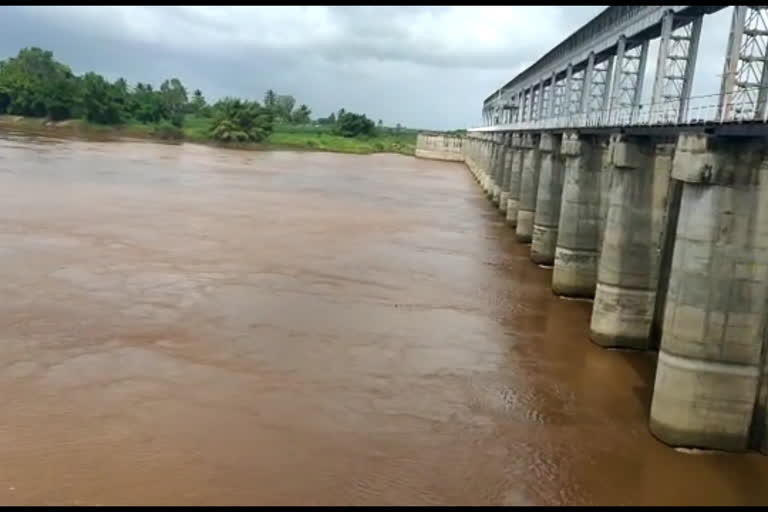New Delhi: Even as former Prime Minister Atal Bihari Vajpayee had disclosed interlinking of Indian Rivers as his ambitious project before one and half decades, the project is yet to take off. During this monsoon season, many rivers in India are witnessing floods and it has not solved water scarcity being faced by several parts of the country.
After Vajpayee, the current Prime Minister Narendra Modi and his subordinates in BJP too promised they would realize the dream of interlinking Indian rivers.
But, the project has not seen any progress despite the NDA has completed six years in office at the centre. After the announcement made by Vajpayee, the Water Resources Ministry and the National Water Development Agency (NWDA) had sought the proposals from the states for linking Intra-State rivers first.
After a detailed study, about 47 proposals were sent by nine states in 2006 itself. Maharastra, Bihar, Tamil Nadu, Gujarat, Odisha, Karnataka, Rajasthan, Jharkhand and Chattisgarh are the states had submitted the proposals for linking the intra-state rivers.
Kerala, Punjab, Delhi, Haryana and UT’s like Puducherry, Andaman Nicobar Islands, Diu&Daman, and Lakshwadeep had informed the centre that they have nothing to propose.
While 47 proposals have come from nine states, only one or two has moved a few inches forward. After a decade, the Union Jal Shakti Ministry had recently approved the Detailed Project Report (DPR) for Ken-Betwa Inter-State river linking project as it passes between Madhya Pradesh and Uttar Pradesh.
Besides, the union ministry had also reviewed Par-Tapi-Narmada Link, Damanganga-Pinjal, Damanganga-Vaitarna-Godavari, Damanganga (Ekdare)-Godavari link, Bedti-Varda link, and Cauvery (Kattalai)-Vaigai-Gundar link projects with the respected states.
Read: Union Minister Gajendra Singh Shekhawat tests Covid +ve
“The North-Eastern and Central parts of India are witnessing flood issues. Assam, Bihar, Madhya Pradesh, Maharastra, Kerala and Karnataka are the states which are often facing the worst flood. However, the western and southeastern India are suffering from water scarcity. Therefore it is very essential for linking the rivers,” said an official with Jal Shakti.
During the 2019 Lok Sabha elections, the then water resources department Minister Nitin Gadkari assured that linking the Godavari with Cauvery as his dream project.
“The government will link Godavari and Cauvery. If the project is completed about 1200 tmc of water which is draining into the sea will be diverted to the water parched Tamil Nadu,” said Gadkari.
Also, he again promised while attending the convocation function of National Institute of Technology (NIT) Karaikal, Puducherry. “The centre works to raise around Rs.60000 crore for linking Krishna, Godavari, Cauvery and Pennar rivers,” Gadkari said.
But, everything is just on papers and has not come into effect. Therefore, Tamil Nadu CM Edappadi K Palaniswamy on Tuesday urged the Union Minister Gajendra Singh Shekhawat to implement Godavari-Gundar river project.
When asked about the delay in this most-expected project, officials with Jal Shakti Ministry said that they are gradually working towards the implementation.
“It is not an easy project like constructing bridges or buildings. It will have its own impacts on environments and geographical situation. There are so many issues like feasibility report, satisfying states’ interests and conflicts, and overcoming political issues. There are around 30 rivers in Peninsular India and the Himalayas region are involved in this project. So, it could not happen in a day. The Ministry conducts review meetings every day. As we are aware of the water shortage and floods in different parts of India, we will not compromise with this inter-linking of rivers project,” said officials.
According to water activist AC Kamaraj who proposed liver linking and inland water project model to the Union Government, linking rivers is the most essential way for efficient water management.
“Interlinking of water will not only solve water scarcity, it will boost our economy. As we can prevent flood and drain of water into the sea, it would ease agriculture sector and inland waterways which will help many industries,” he said in a report sent to Parliamentary committee and Jal Shakti Ministry as well.
Read: Ladakh conflict may escalate, India scouts for weapons, military equipment



